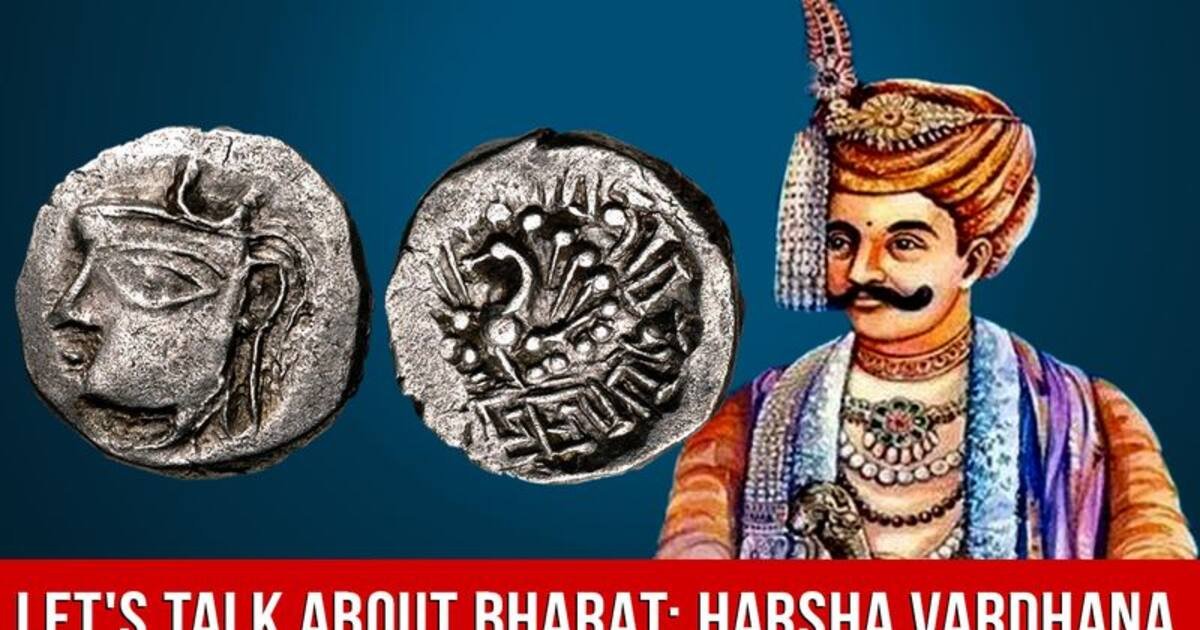King Harshavardhana, who is also known as Harsha, was a member of the Vardhana dynasty. There was a political disunity in North India with the fall of the Gupta dynasty. After the Huns invasion, Pushyabhutis, who were the feudatories of the Guptas, assumed independence. King Harshavardhana came to power in the early 7th century A.D. He ruled over North India from 606 – 647 A.D. He established a vast empire that stretched from northern and northwestern India to the Narmada River in the south. Kannauj was his capital. His reforms and policies were benevolent and always focused at improving his people’s peace and prosperity.
Harshavardhana
- In 590 AD, Harshavardhana was born to King Prabhakaravardhana of Sthaneshwar (Thanesar, Haryana).
- He was a Pushyabhuti, commonly known as the Vardhana dynasty.
- He was a Hindu who converted to Mahayana Buddhism.
- Durgavati was his wife.
- He has two boys and a daughter. His daughter married a Vallabhi monarch, but his sons were murdered by his own minister.
- Following the death of Prabhakara Vardhana, his elder son Rajyavardhana came to the throne.
- Harsha had a sister named Rajyashri, who was married to Kannauj’s King Grahavarman.
- The Gauda monarch, Sasanka, slew Grahavarman and imprisoned Rajyashri.
- This compelled Rajyavardhana to confront Sasanka. However, Sasanka murdered Rajyavardhana.
- This resulted in Harshavardhana, a 16-year-old, ascending to Thanesar’s throne in 606 AD.
- He promised to avenge his brother’s death while also saving his sister.
- For this, he formed an alliance with Kamarupa King Bhaskaravarman. Harsha and Bhaskaravarman go out to confront Sasanka. Sasanka eventually fled for Bengal, and Harsha became the ruler of Kannauj as well.
- The Harshacharita, a prose biography authored by Banabhatta, court poet of King Harshavardhana, and the chronicle of the Chinese traveller Xuanzang are two primary sources of knowledge about the Pushyabhuti kingdom.
- In his writings, Chinese Buddhist traveller Xuanzang commended King Harshavardhana’s actions.
Harshavardhana Reign
- One of his first moves was to rush to Kanyakubja and save his sister, who was about to commit sati. Kanauj was eventually taken over by the Pushyabhutis.
- Harsha was successful in uniting many of them under his authority. Punjab and central India were under his power.
- He conquered Bengal, Bihar, and Odisha after Sasanka’s death.
- In Gujarat, he also vanquished the Vallabhi king. (The Vallabhi monarch and Harsha reached an agreement through the marriage of Harsha’s daughter and the Vallabhi king Dhruvabhata.)
- Harsha’s attempts to conquer areas to the south, however, were thwarted when the Chalukya monarch, Pulakesin II, defeated him in 618-619 A.D.
- The Narmada River became Harsha’s southern territorial border as a result of this.
- Under Harsha, there were two sorts of territories. One category was directly under him, while the other was feudatories.
- Harsha had complete control over the feudatories. Harsha’s reign saw the birth of feudalism in India.
- During Harsha’s reign, Hiuen Tsang visited India. He has painted a glowing picture of King Harsha and his realm. He compliments him on his generosity and justice.
- Harsha was a generous supporter of the arts.
- He was a skilled writer in his own right. He is known for his Sanskrit writings Ratnavali, Priyadarshika, and Nagananda.
- Banabhatta was his court poet, and he wrote the Harshacharita, which describes Harsha’s life and actions.
- Harsha gave liberally to Nalanda University.
- He had an excellent tax structure. A quarter of the taxes collected were spent for charitable and cultural causes.
- Harsha was a capable military conqueror and administrator.
- Before the Muslim invasions, Harsha was the last ruler to preside over a wide realm in India.
- With Pataliputra losing its prominence, he made Kanauj (situated in Farrukhabad district of Uttar Pradesh) as his seat of power.
- He ruled over entire North India except for Kashmir.
- Rajasthan, Punjab, Uttar Pradesh, Bihar, Orissa were under his direct control.
Harshavardhana – Administration
- We don’t have much information on Harshavardhana’s administration, although there appears to be a lot of continuity in official designations from the Gupta period.
- Bana describes forest guardians called vanapalas. A sarva-palli-pati officer is mentioned (chief of all the villages).
- Important officers of Harsha’s administration:
- The ‘sreshti’ (Chief Banker or Merchant)
- The ‘sarthavaha’ (Leader of Merchant Caravans)
- Prathama kulika (Chief Craftsman)
- Kayasthas (head of the scribes)
- According to Xuanzang, people were lightly taxed, and the monarch received one-sixth of the farmer’s yield as his grain portion.
- Inscriptions describe dues such as bhaga, bhoga, kara, and hiranya—terms familiar from previous inscriptions.
- Xuanzang describes the army as composed of infantry, cavalry, chariots, and elephants.
- The Banskhera and Madhuban inscriptions mention the king’s victorious camp, which includes boats, elephants, and horses.
- During Harsha’s reign, trade and commerce had decreased. This is evidenced by the loss of commercial centres, a decrease in the quantity of coinage, and the sluggish activity of merchant guilds.
- When compared to the Gupta period’s economy, there was a dramatic economic fall.
- King Harshavardhana divided his revenue into four parts
- To meet the expenditure of the king
- For scholars
- For the endowment of public servants and officials
- For religious purposes.
- The administration of King Harshavardhana was more feudal and decentralised.
- He frequently made inspections throughout his empire.
- The law and order was not maintained well during his reign.
- The land tax collected from the people was one sixth of their produce
- The important feature of his administration was the maintenance of public records.
- He made land grants to priests and officers. This practise seems to have begun for Harsha’s time.
- Huge army was maintained by him. His army consisted of four divisions – Cavalry, chariot, elephant and horse.
- Harsh punishments continued to exist. However, under the influence of Buddhism, it was mitigated to some extent.




